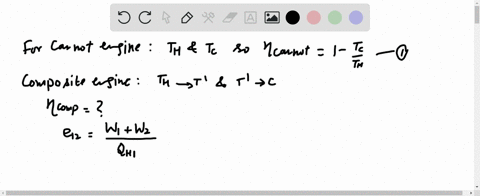

The experience that leads to the second law is the following. For didactic purposes, however, the first law is usually treated first. The second law of thermodynamics was developed during the investigations of Sadi Carnot (1796 - 1832) and dates from before the first law. van Ekeren, in Handbook of Thermal Analysis and Calorimetry, 1998 4.1 Negative formulation of the second law This gradual decrease in the measure of disorder of the molecules is identified with entropy changes, being high for a gas and low for a solid.P.J. Hence in a solid, the atoms, molecules or ions have little or no choice as to where they shall be i.e., they are highly ordered or have a very small freedom. In the solid state, the atoms, molecules or ions that form the crystal are usually held in fixed crystal lattices, which can only vibrate and rotate. Also in the liquid state, the forces of intermolecular attraction are greater, causing a still more highly ordered state. The molecules in the liquid state are more highly ordered than a gas at high pressure. In the liquid state, the molecules are much closer together than in the gaseous state, because the volume containing the same number of molecules is much smaller. Added to this, the force of intermolecular attraction increases as the pressure increases and this too has a restricting effect on the molecules. Hence, the molecules are more ordered (or less randomly distributed) at higher pressure. The chances of finding a molecule within a given volume are greater under these conditions than when it was at lower pressure. If the pressure is increased, the same number of molecules now occupy a smaller volume.

#Explain the second law of thermodynamics free#
In the gaseous state and at low pressures, the molecules are free to move about unrestricted. If any process is carried out reversibly, so that dqrev is the heat absorbed by the system the process at constant temperature (T), then the entropy change (dS) is given by It is impossible to use a cyclic process to extract heat from a reservoir and to convert into work without transforming at the same time a certain amount of heat from a hotter to a colder part of the body or It is impossible to convert heat into work without compensation. It helps us to calculate the maximum fraction of heat that can be converted to work in a given process. It helps us to know the equilibrium conditions of a chemical reaction.Ĥ. It helps us to predict whether a given process or a chemical reaction can occur spontaneously.ģ. Second law helps us to determine the direction in which energy can be transferredĢ. First law states that energy of one form can be converted to an equivalent amount of energy of another form but it does not tell that heat cannot be completely converted into an equivalent amount of work without producing some change elsewhere.Īdvantage of Second law of thermodynamicsġ. But it does not tell whether that specified change including a chemical reaction can occur spontaneously i.e. According to first law energy of an isolated system remains constant during a specified change of state. First law gives definite relationship between the heat absorbed and the work done by the system in a given process, but it does not tell about the direction of flow of heatĢ. Second law of thermodynamics Chemistry Doubtsġ.


 0 kommentar(er)
0 kommentar(er)
